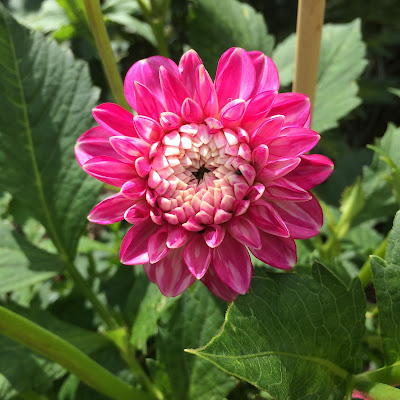 |
| Dead Bumblebee |
As anyone who reads this blog will know I am passionate about our wildlife, I always have been and always will be. I enjoy watching, studying, reading and writing about it and occasionally campaigning for it and this is one of those occasions.
Firstly I should declare another interest, as of next year I intend to keep bees in the garden so this subject could directly affect them, but it is the overall effect on the environment that worries me most.
Neonicotinoids are a group of insecticides that are used as seed costing on Rape, Maize and other crops to combat insects such as flea beetles. The work systematically being taken up by the plant and infiltrating the tissues including nectar and pollen, anything eating any part of the plant will be poisoned. They are extremely toxic in tiny doses, it has been calculated that a tablespoon full added to an Olympic swimming pool is concentrated enough to kill a bee. They work on the nervous system and in bees it appears to disrupt their ability to navigate back to the hive, a lost bee will die.
Another issue is that the seed coating rubs off whilst being sown forming a dust that blows into the surrounding field margins or further, killing the insect and invertebrates living there. It has also been shown to persist in the soil for 2 years where they kill invertebrates such as earthworms and other beneficial creatures.
So why am I writing about this now? Well under from this pressure from France and some other EU countries a 2 year ban on their use from Dec 2013 was introduced, the UK voted against the ban. In July the UK government decided cut short the ban and to allow their use here in the East of England from the December ( see
https://www.buglife.org.uk/news-%26-events/news/pesticide-approval-strikes-blow-for-bees). The government has ignored much of the research that has been presented to them an lifted the ban under pressure from the big Agrochemical companies and from the National Union of Farmers.
The really ironic thing is that this year according to ADAS the crop yield for rape is actually up (See
https://www.buglife.org.uk/news-&-events/news/breaking-news-oilseed-rape-flourishes-without-bee-killing-chemicals) .This could actually be because there are more bees and other insects around due to the ban
So what can we do as Wildlife friendly gardeners? Well loby your MP's, sign petitions join organisations like The Bumblebee Conservation trust or Buglife. Oh and don't use them in your garden...
Yes, if you go to the Garden centre to buy something to get rid of the greenfly you could be buying Neonic's.
Here is a list of some you might find.
UK Home and garden products that contain neonicotinoid pesticides
|
Product Name
|
Manufacturer
|
Active Ingredient
|
|
|
|
|
|
Baby Bio House Plant Insecticide
|
Bayer CropScience Ltd
|
Thiacloprid
|
|
Multirose Bug Killer
|
Bayer CropScience Ltd
|
Thiacloprid
|
|
Provado Ultimate Bug Killer 2
|
Bayer CropScience Ltd
|
Methiocarb and Thiacloprid
|
|
Provado Ultimate Bug Killer Concentrate 2
|
Bayer CropScience Ltd
|
Thiacloprid
|
|
Provado Ultimate Bug Killer Ready to Use
|
Bayer CropScience Ltd
|
Thiacloprid
|
|
Provado Vine Weevil Killer 2
|
Bayer CropScience Ltd
|
Thiacloprid
|
|
|
|
|
|
Bugclear Ultra
|
The Scotts Company (UK) Limited
|
Acetamiprid
|
|
BugClear Ultra
|
The Scotts Company (UK) Limited
|
Acetamiprid
|
|
BugClear Ultra for Pots
|
The Scotts Company (UK) Limited
|
Acetamiprid
|
|
BugClear Ultra for Pots Ready to Use
|
The Scotts Company (UK) Limited
|
Acetamiprid
|
|
BugClear Ultra Gun!
|
The Scotts Company (UK) Limited
|
Acetamiprid
|
|
Bugclear Ultra Vine Weevil Killer
|
The Scotts Company (UK) Limited
|
Acetamiprid
|
|
Bugclear Ultra Vine Weevil Killer
|
The Scotts Company (UK) Limited
|
Acetamiprid
|
|
RoseClear for Bugs
|
The Scotts Company (UK) Limited
|
Acetamiprid
|
|
Roseclear Ultra
|
The Scotts Company (UK) Limited
|
Acetamiprid
|
|
Roseclear Ultra GUN!
|
The Scotts Company (UK) Limited
|
Acetamiprid
|
There are also some composts that contain anti Vine weevil compounds (Neonic's) please don't buy them as you will be poisoning every insect that visits your plants.
When I was at college studying ecology the story that was used as the example of a man made ecological disaster was the story of DDT, the wonder insecticide developed to combat the Malaria carrying Mosquito. It was so effective it became the insecticide of choice around the world. Unfortunately it's widespread use permeated the worlds ecosystems killing fish, birds including the Peregrine Falcon in the UK where it caused Egg failure by thinning the shells. eventually it's use was banned after mass protests. I really fear that Neonic's could actually be worse, they are acting on the bottom of the food chain as well as on the insects that pollinate all our fruit and many other crops including rape. If we keep polluting our land with these poisons I am sure that in the very near future we could be in real trouble with ecosystems collapsing.

















































